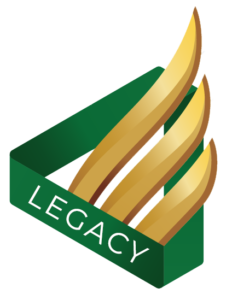
This is an extract from the 2022 FLEET annual report [read the full report online] See previous section (Vision) / see next (Equity in 2022)
NEW STRATEGIC ACTIVITIES
Two major new strategic initiatives announced in 2021 have taken shape in 2022.
FLEET has devoted half a million dollars to the FLEET Translation Program to identify projects ready for translation and enable HDR students, postdocs and investigators to take the next step.
FLEET has engaged Michael Harvey to manage the program, directed by Chief Investigator Matt Davis. The program has approved six projects to date and another 18 additional projects have been identified as having prospects for funding. The projects range from prototyping an aqueous zinc battery for low-cost, grid-scale electrical energy storage to developing machine learning software
to streamline scanning tunnelling microscopy (see case study).
The Centre’s Women in FLEET Fellowship program had demonstrated that advertising broadly (across the whole of FLEET) for women candidates could significantly increase the number of qualified applicants, and FLEET briefed the ARC on this successful strategy for increasing diversity in science. In 2022 FLEET expanded this program to other diverse groups under-represented in science, with four new Diversity in FLEET Fellows starting in 2022 with representation from women, LGBTIQA+ and people with disadvantaged backgrounds (see case study).
RESEARCH HIGHLIGHTS
FLEET has made significant progress towards key research milestones. In 2022 FLEET researchers have:
- Shown with detailed modelling that the negative-capacitance, topological, quantum field-effect transistor (NCTQFET) can operate as a three-terminal device switching at lower voltages, and have refined the NC-TQFET concept, identifying key materials and strategies that will enable operation at significantly lower voltages compared to conventional MOSFET technology
- Identified new prospects for magnetic topological insulators operating at elevated temperatures, and topological structures in ferroelectrics, with potential for ultra-low energy switching at room temperature
- Demonstrated a versatile fabrication scheme for integrating two-dimensional (2D) semiconductors into optical cavities with strong coupling at room temperature, as well as demonstrating lateral trapping of exciton-polaritons at room temperature in 2D semiconductors with a dramatic increase in quantum coherence.
FLEET researchers published 121 peer-reviewed articles in 2022, with 67 (over 55%) in high-impact outlets (impact factor greater than 7). Some of the major research achievements are highlighted.
ENABLING TECHNOLOGY THEME A
Novel quantum materials lie at the heart of FLEET’s mission. Introducing magnetism to topological materials has enormous benefits, as magnetic topological states (e.g. the quantum anomalous Hall effect) are truly free of electrical resistance. However, magnetic topological materials operating at elevated temperatures, ideally room temperature, remain a challenge. FLEET has made significant progress against this challenge in 2022. One important strategy for creating magnetic topological structures is to use the proximity of magnetism and topology at an atomically-sharp interface. FLEET researchers demonstrated the quantum anomalous Hall effect in such a structure constructed of a stack of 2D van der Waals materials hetero-structure consisting of an ultrathin slab of Bi2Te3 (a topological insulator) sandwiched between two single layers of MnBi2Te4 (a magnetic insulator) – see the case study. Ultimately, room-temperature 2D ferromagnetic materials will be needed to create room-temperature topological ferromagnetic structures, and FLEET researchers have made progress in this area by demonstrating that strain can stabilise ferromagnetism above room temperature in the 2D van der Waals material Cr2Ge2Te6.
ENABLING TECHNOLOGY THEME B
FLEET is working to turn novel quantum materials and effects into useful new devices. In 2022 FLEET researchers demonstrated that the interfacial magnetism in van der Waals materials (in this case the exchange bias between a van der Waals ferromagnet in contact with a van der Waals antiferromagnet) could be controlled electrically using a proton intercalation (see case study). FLEET researchers also demonstrated in 2022 room-temperature negative differential resistance switched by ferroelectricity in a resonant tunneling diode. This demonstration paves the way for novel switches and memory devices based on nanoscale topological defects in ferroelectrics. Ferroelectric control of a 2D semiconductor, which would enable in-memory computation devices, was also demonstrated in 2022.
RESEARCH THEME 1
FLEET’s Research Theme 1 is creating new transistors in which the topological state of a material is switched on and off. FLEET researchers previously demonstrated that topological switching can be accomplished with an electric field, and the strong spin-orbit coupling in topological materials enabled switching at lower voltages than conventional MOSFETs, a concept called the topological quantum field-effect transistor (TQFET). Further gains in lowering the switching voltage are possible when topological insulators are integrated with ferroelectrics to create a negative-capacitance TQFET.
In 2022 FLEET researchers showed with detailed device modelling that the TQFET using 2D materials called Xenes (analogous to graphene, but with carbon replaced by other elements such as antimony or bismuth) can operate as traditional three-terminal devices with lower switching voltage than conventional MOSFETs. FLEET researchers also uncovered a complex interplay of size confinement and topology in one-dimensional ‘ribbons’ of Xenes. They found that the topological character of the switching behaviour can be preserved even in narrow ribbons, with the advantage that bandgaps can be increased and the threshold voltage for switching further reduced (see the case study). This indicates that TQFETs will show additional benefits when shrunk to the nanoscale.
FLEET researchers are also exploring the potential of 2D materials with the lattice structure known as kagome (after their resemblance to a traditional Japanese basket-weaving technique). Like the graphene or Xene lattice, the kagome lattice hosts Dirac points and potentially can be made topological with strong spin-orbit coupling. However, the kagome lattice has a third band which is nearly dispersionless or ‘flat’, and can host novel interacting insulating states. In 2022 FLEET researchers constructed and built a designer kagome lattice using a metal–organic framework, and showed that strong interactions drive the emergence of magnetism in this network. Such networks have exciting prospects for electrically-controlled metal–Mott insulator transitions (a MottFET transistor) or electrically-controlled magnetism for spintronics applications.
RESEARCH THEME 2
FLEET’s Research Theme 2 aims to demonstrate devices based on resistanceless coherent superfluid flow of excitons or exciton-polaritons at room temperature. A room-temperature superfluid is a grand challenge and requires several advances. Superfluidity requires not only strongly-bound excitons (an electron bound to a hole in a semiconductor) or strongly-coupled exciton-polaritons (excitons strongly coupled to photons in an optical cavity) but also strong interactions between excitons or exciton-polaritons. However, many basic aspects of interparticle interactions were not understood when FLEET began.
In 2022 FLEET made major advances in the theoretical understanding and experimental measurements of excitons interacting with each other and with the sea of free fermions in a doped semiconductor (exciton-polarons). The team has produced the quantum virial expansion of exciton-polarons, unifying the trion picture (exciton strongly bound to a single electron) and the Fermi polaron picture (exciton dressed by a sea of fermions). This research is also vital to understanding light-controlled matter and non-equilibrium states in superfluids, and overlaps strongly with FLEET’s Theme 3. The team has also experimentally probed the attractive and repulsive interactions of exciton-polarons in the 2D semiconductor WS2. WS2 has two distinct Fermi seas living in two separate ‘valleys’, and the team was able to observe for the first time that exciton-polarons only interact with those coupled to the same Fermi sea. The team was able to apply similar techniques to observe the bi-exciton (strongly-bound pair of excitons) in WS2.
The FLEET team also continues to press towards demonstrating superfluidity at room temperature in exciton-polaritons in 2D semiconductors. In 2022 the team demonstrated a versatile strategy for fabricating 2D semiconductor devices in optical cavities to achieve strong light–matter coupling at room temperature. The team was also able to demonstrate lateral trapping of exciton-polaritons at room temperature, resulting in extraordinary coherence which may have applications in quantum devices. Room-temperature superfluidity remains tantalisingly close, though not achieved yet!
FLEET’S STRATEGIC PRIORITIES
- Enable discoveries at the scientific frontier
- Develop next generation of science leaders
- Establish synergistic partnerships
- Foster equity and diversity in STEM
- Improve students’ scientific literacy and public awareness of FLEET science
- Facilitate communication.
FLEET’S CENTRE PRIORITIES IN 2023
- Communicate FLEET’s legacy internally and externally
- Continue implementing the Centre’s sustainability and translation plans
- Focus on industry mentoring and internship programs.
RESEARCH THEME 3
FLEET’s Theme 3 uses light to control the properties of matter on ultra-fast timescales, particularly superfluidity and topology, with prospects for switching materials at the fastest imaginable timescales of hundreds of terahertz. As in Theme 2, many of the basic aspects of superfluids pushed far from equilibrium were not understood when FLEET began. In 2022 the FLEET team was able to observe how vortices injected into a superfluid rapidly merge to form stable giant clusters (see the case study). The stability of these giant clusters is analogous to the stability of cyclones in the atmosphere, or Jupiter’s Great Red Spot.
The FLEET team has demonstrated ultra-fast optical control of graphene’s conductivity in 2022, probed at terahertz frequencies in the time domain, and is now poised to demonstrate control of the topological state of 2D materials such as graphene and 2D semiconductors.
FLEET’S LEGACY WILL BE MEASURED BY:
 Increased understanding of quantum materials and electronic devices, and new concepts for low-energy electronics at the frontier of science
Increased understanding of quantum materials and electronic devices, and new concepts for low-energy electronics at the frontier of science- The next generation of science leaders, trained in the electronics of tomorrow
- A capacity for quantum materials and electronic devices research in Australia
- Strong links to international excellence, and ongoing partnerships between industry, academia and government, ensuring translation of FLEET science to industry
- Increased diversity in STEM and models for more inclusive research collaboration
- Recognition of the grand challenge of sustainable computing by government and society.
FLEET is also ensuring longevity of other ARC Centres’ proven science-outreach outputs: See the case study about the National Science Quiz, ensuring outreach legacy.








